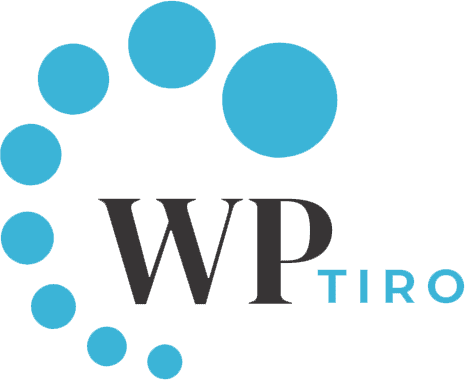In this article, we will be showing how to add Posts in WordPress.
Posts sometimes are also known as Articles or Blog posts that display in reverse order on your home page and/or blog page. Posts usually have author names, a comment section on them, and also included in your site’s RSS feed.
If you ever came across a Custom Post Type in WordPress, it is not different than the default Posts of WordPress. And adding posts in custom post type is also the same as what we are going to discuss in this article.
Beginners often get confused regarding posts and pages in WordPress and especially when to use them, if you want to know about the differences then please read the following article Posts vs Pages in WordPress.
Following are the simple ways to Add Posts in WordPress.
First, log in to your WordPress Administration Screen (Dashboard).
Click or hover around the Posts tab. In the expanded menu you will see 4 options, “All Posts”, “Add New”, “Categories” and “Post Tags”.
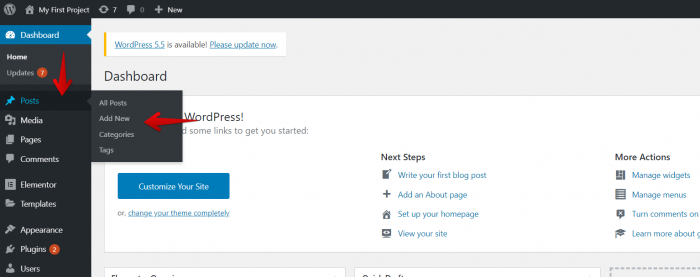
Click on the Add New option. After clicking, you will be directed to a new Page.
On the new page, you should see the Add Title text box at the top, enter the title for your Blog.
In the example below, I have added ‘My New Blog’ as the Title. Furthermore, click on the ‘+‘ sign to expand its option, these are the available items you can use in your post.
But for this example, we will just add a Heading and an image.
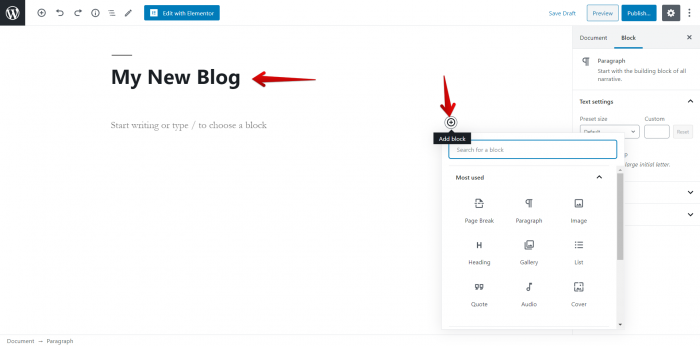
The image below shows my post after adding a Header section and Image. You can play with the settings of the items by using the properties panel displayed on the right-hand side of the page.
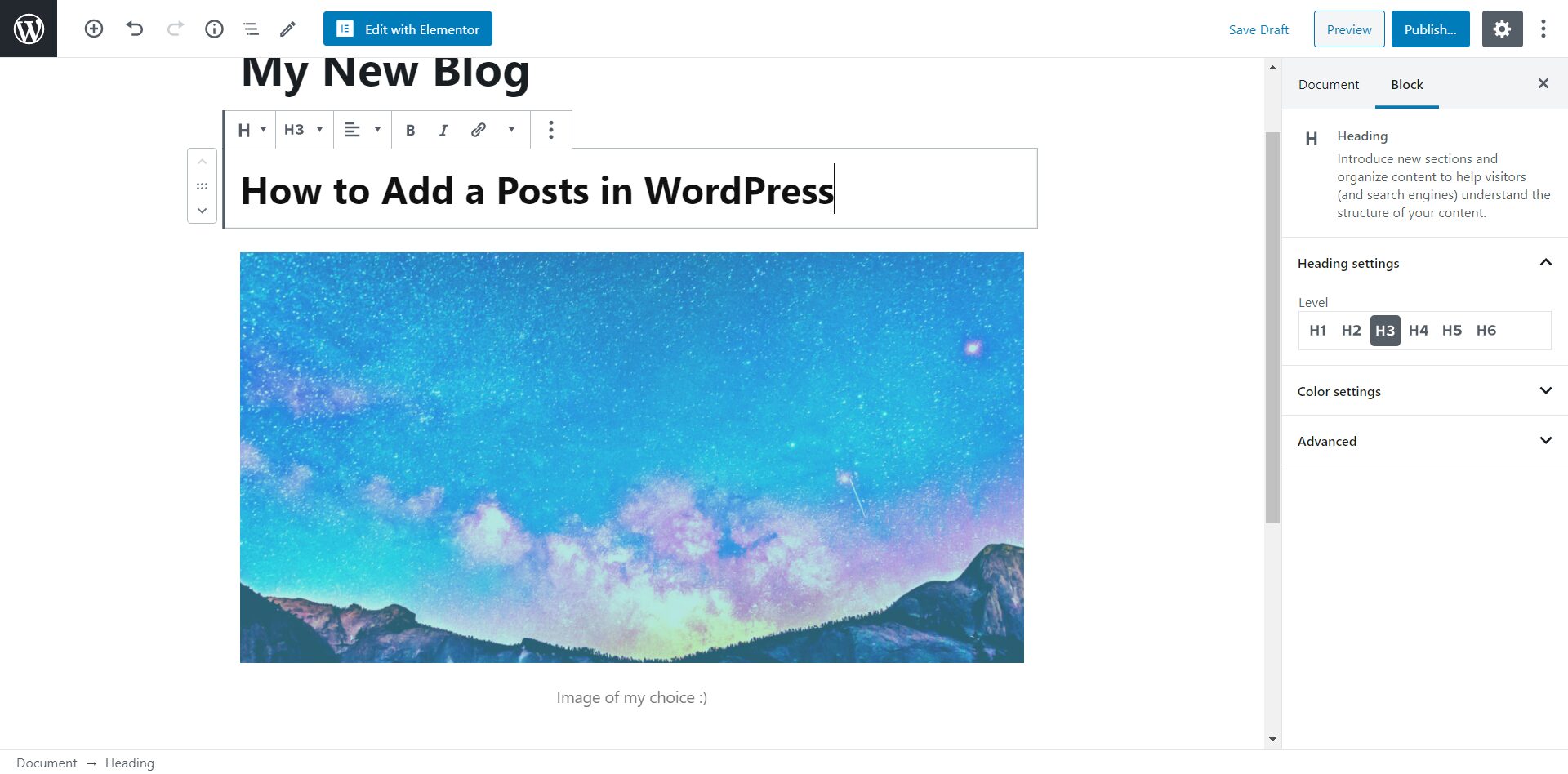
Till now we have successfully added some content to the post and can publish it by hitting on the Publish button. But before doing that let us explore the options which you need to know before publishing your posts.
On the right-hand side under the Document tab, you will find several settings associated with your posts. if you don’t see the options click on the settings icon. Let’s talk about all the options available starting for the top.
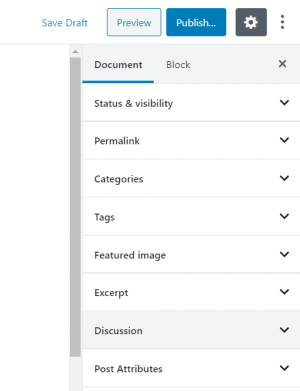
- Save Draft: Click on this to save work. Even if your PC crashes or something terrible happens, if you have saved it as a draft then you should be able to continue from where you left.
- Preview: This option is useful when you want to see how your post looks like before going live. Always a good idea to preview your post before going live.
- Publish: After you are happy with your post, click on this option to go live with your post. For detailed info on how to publish a post click here.
- Status and Visibility: Options available for this are:
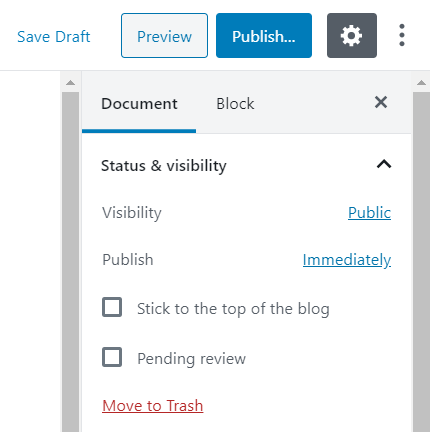
- Visibility: This gives an option to make your post either Public or Private and also can set it to password protected.
- Publish: Here you can set the time you want your post to go Live.
- Stick to the top of the blog: Check this option if you want to display this post to the top of your blog.
- Pending review: Checking this option means that this post is waiting for review.
Add and Assign a Category to the Post
- Categories: This option lets you organize your posts into a structured section. If you don’t have any category setup yet and want to know how to add one, please read our article on How to Add Categories in WordPress?

- Tags: Similar to Categories, Tag is one of the taxonomies in WordPress used to group your content.
- Featured Image: A featured image is a representative image that appears on your blog post, it is important to have a featured image so that it acts as a thumbnail for your post. Make sure your image has a size of at least 1200 by 675 pixels.
- Excerpt: It is an optional text or summary associated with your Post. If the excerpt is empty then WordPress will automatically create an excerpt with the first 55 words of your post.
- Discussion: By default, the two options under Discussion are checked. If you don’t want to allow comments in your post, untick the box.
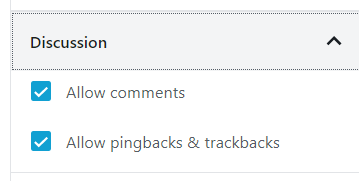
Ticking the Trackbacks and pingbacks option enables you to get an alert for blogs that you have linked to them.
Trackbacks must be created manually, and send an excerpt of the content while Pingbacks are automated and don’t send any content.
- Post Attributes: It allows you to set page parents, templates, and to change the order of your pages.
Conclusion
Hope this article helped you to add Posts in WordPress.
Please leave us your feedback in the comments section below.
